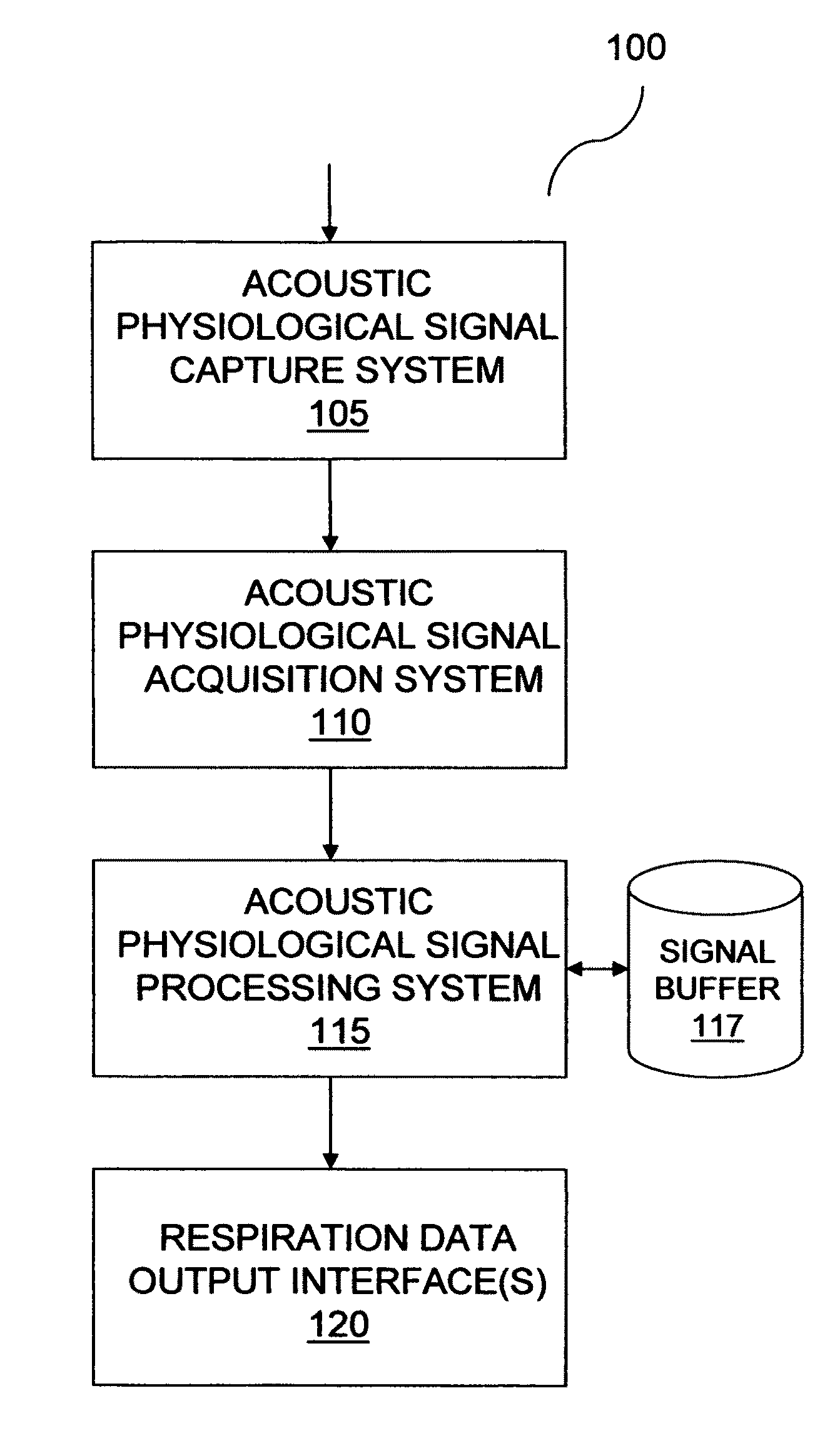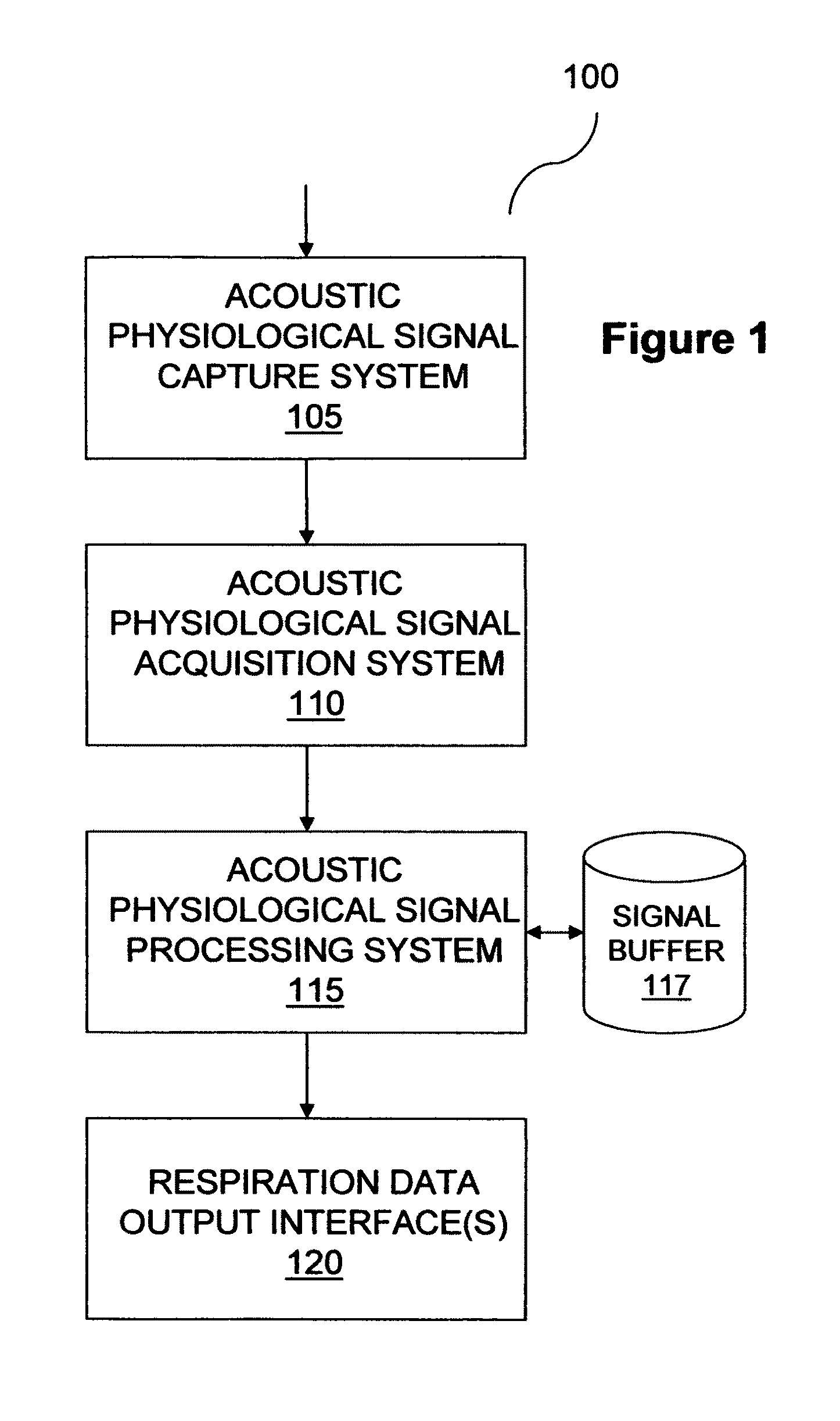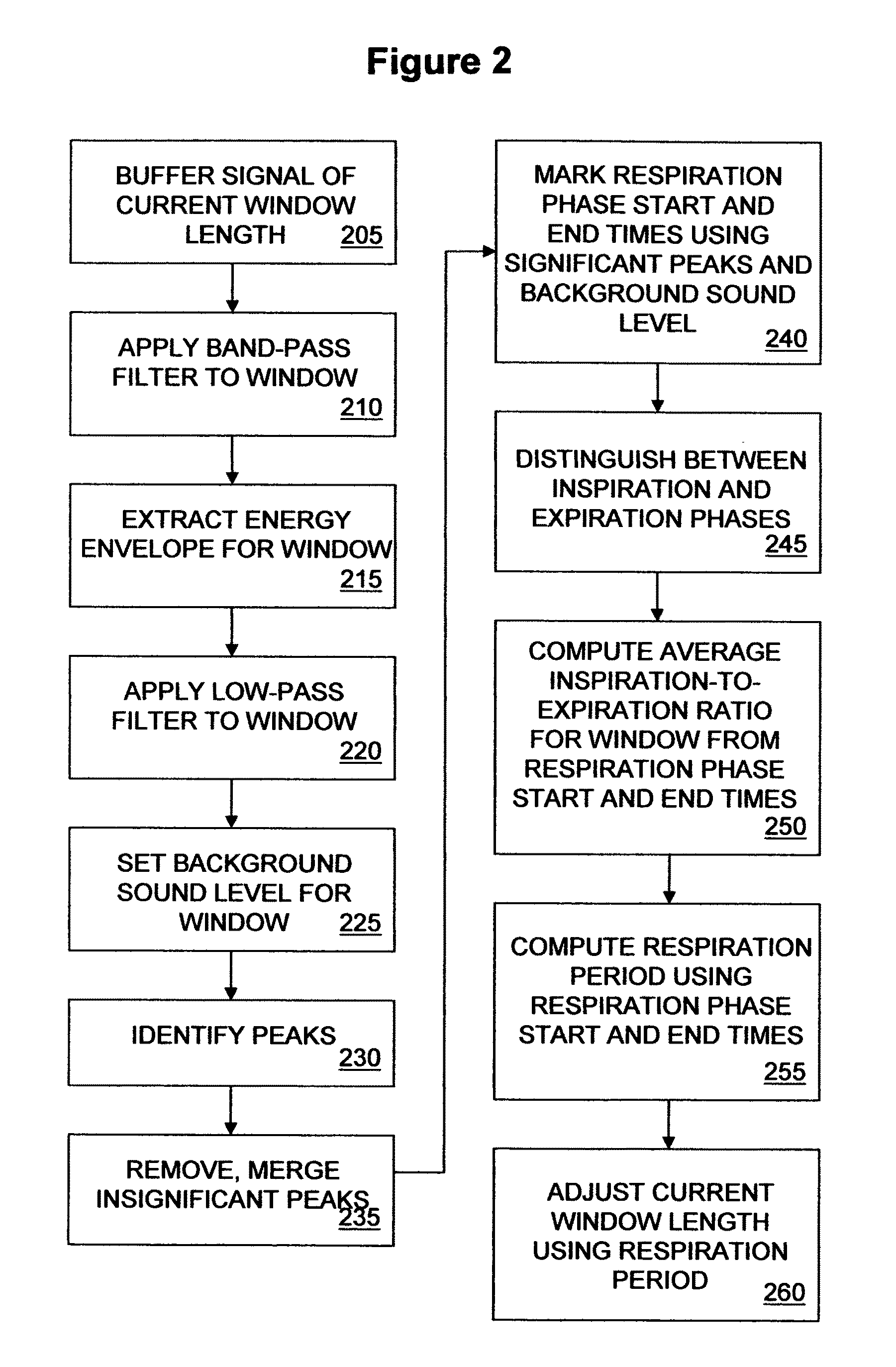Method and system for reliable inspiration-to-expiration ratio extraction from acoustic physiological signal
a physiological signal and inspiration technology, applied in the field of reliable inspiration-to-expiration ratio extraction from acoustic physiological signals, can solve the problems of parameter estimation error, reliance on erroneous estimates, and erroneous estimation of physiological parameters by the device and outputting, so as to reduce system complexity, reliable extraction of inspiratio, and reliable determination of respiration phases
- Summary
- Abstract
- Description
- Claims
- Application Information
AI Technical Summary
Benefits of technology
Problems solved by technology
Method used
Image
Examples
Embodiment Construction
[0028]FIG. 1 shows a physiological monitoring system 100 in some embodiments of the invention. Monitoring system 100 includes an acoustic physiological signal capture system 105, an acoustic physiological signal acquisition system 110, an acoustic physiological signal processing system 115 and acoustic physiological signal output interfaces 120, communicatively coupled in series. Processing system 115 is also communicatively coupled with a signal buffer 117.
[0029]Capture system 105 detects body sounds, such as heart and lung sounds, at a detection point, such as a trachea, chest or back of a person being monitored and continually transmits an acoustic physiological signal to acquisition system 110 in the form of an electrical signal generated from detected body sounds. Capture system 105 may include, for example, a sound transducer positioned on the body of a human subject.
[0030]Acquisition system 110 amplifies, filters, performs analog / digital (A / D) conversion and automatic gain co...
PUM
 Login to View More
Login to View More Abstract
Description
Claims
Application Information
 Login to View More
Login to View More - R&D
- Intellectual Property
- Life Sciences
- Materials
- Tech Scout
- Unparalleled Data Quality
- Higher Quality Content
- 60% Fewer Hallucinations
Browse by: Latest US Patents, China's latest patents, Technical Efficacy Thesaurus, Application Domain, Technology Topic, Popular Technical Reports.
© 2025 PatSnap. All rights reserved.Legal|Privacy policy|Modern Slavery Act Transparency Statement|Sitemap|About US| Contact US: help@patsnap.com



